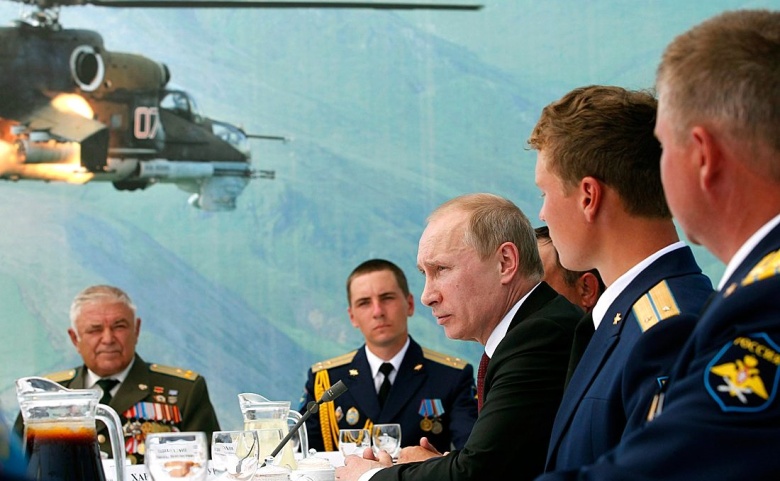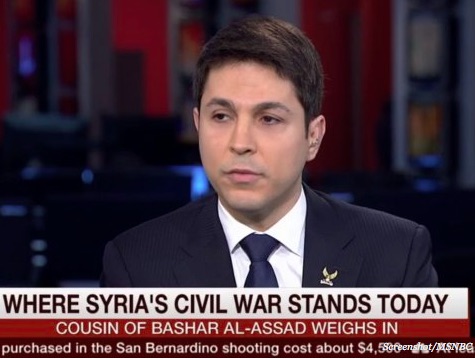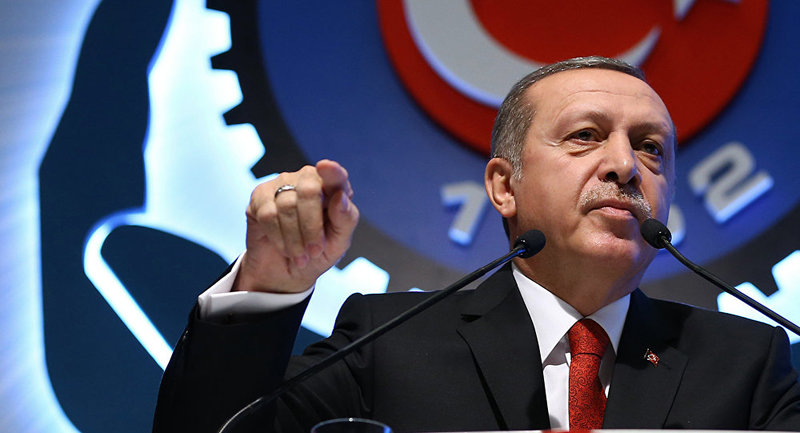لم يكن هناك نقص في التغطية الإخبارية السورية في الأسابيع الأخيرة. ومع ذلك، لا يزال هناك افتقار إلى المنطق والتماسك في كلمات السياسيين والصحفيين حول موضوع التدخل.
إن الإدانة العامة لوحشية النظام السوري لها ما يبررها بالطبع. لكن هناك الكثير من الافتراضات التي تقوم عليها الحجج حول "ماذا بعد؟" و "لماذا؟ اعتقادي الذي أشرت إليه في مرات عديدة سابقة، هو أن التدخل العسكري لا يمكن أن يؤدي إلا إلى تصعيد الصراع.
وبشكل أكثر تحديدًا، لم أقتنع بعد بما يلي:
1- يمكن إرجاع استخدام الأسلحة الكيماوية بشكل قاطع إلى النظام
2- لم يتم استخدام الأسلحة الكيميائية من قبل المعارضة
3- وجود أي درجة من الاعتدال داخل المعارضة
4- ضمن هذه العقدة من المصالح الجغرافية السياسية والصراع الطائفي والحرب الأهلية، لا يتم إيلاء الاهتمام الكافي للأغلبية المسالمة من السوريين وفرصهم في العيش في بلد حر وديمقراطي
على المستوى العالمي، فشلت المصافحات والابتسامات القسرية في قمة مجموعة العشرين في إخفاء العداء المتزايد بين الولايات المتحدة وروسيا. فقد أعلنت موسكو في وقت سابق عن مناوراتها الحربية الروسية البيلاروسية "غرب - 2013". وردت بروكسل بعملية "الجاز الصامد" الخاصة بها. وبعد ذلك أبحرت سفن حربية روسية وأمريكية باتجاه الساحل السوري (إحدى السفن الروسية هي سفينة إنزال تحمل "شحنات خاصة")، وقد صرح فلاديمير بوتين بشكل قاطع أنه سيدعم النظام السوري إذا تطلب الأمر. بالإضافة إلى أنظمة الصواريخ التي تم تصديرها إلى سوريا، وأعلن أنه "إذا رأينا أن القانون الدولي يُنتهك فسوف نعيد النظر في إجراءاتنا المستقبلية، بما في ذلك توريد مثل هذه الأسلحة الحساسة إلى مناطق معينة من العالم".
لم يتم ذكر إيران على وجه التحديد، ولكن الرابط واضح. وبدعم من روسيا، فإن أي حل غربي لبرنامجها النووي سيصبح مستحيلاً. ولعل هذا هو السبب في ارتفاع حصة طهران اليومية من التهديدات، النابعة من جميع قادتها السياسيين والعسكريين الذين يصرون على أنهم سيقاتلون حتى النهاية لإنقاذ التحالف "المثالي" مع لبنان والعراق وسوريا. وقد أضاف الشيخ حسن نصر الله، الأمين العام لحزب الله، أنه سيقاتل شخصياً إلى جانب النظام السوري إذا تطلب الأمر.
وفي هذا السياق، من الصعب أن نرى كيف يمكن لـ "الطلقة التي أطلقها الرئيس أوباما عبر الأقواس" أن تحقق أي شيء في اتجاه السلام.
لقد أثارت المناقشات في وستمنستر وباريس وواشنطن الكثير من التحديق البحري حول تأثير السياسات الخارجية لكل منهما، ودور الغرب كشرطي العالم، ورسم "الخطوط الحمراء". هذا الأمر يثير الكثير من التشويق السياسي (والنسخ الصحفية)، لكنه يصبح أكثر بعداً كل يوم عن حقيقة ما يحدث في سوريا وحولها.
دعونا لا ننسى أنه مضى الآن عامان ونصف على اختطاف المظاهرات السلمية ضد النظام من قبل الجماعات المتطرفة، ومنذ أن دعا الشيخ اللحيدان، رئيس مجلس القضاء الأعلى السابق في المملكة العربية السعودية، إلى الجهاد ضد العلويين حتى لو مات ثلث السكان في هذه العملية.
في الأسابيع والأشهر اللاحقة، دعا العديد من كبار رجال الدين المؤثرين، بمن فيهم مفتي المملكة العربية السعودية والشيخ القرضاوي، إلى الجهاد ضد سلسلة من الأقليات داخل سوريا، البلد الذي اشتهر في السابق بمواقفه الليبرالية وفسيفساء من الأعراق التي تعيش في وئام.
وقد حدث هذا التحريض على العنف في بيئة أصبحت فيها الأجنحة السياسية والعسكرية للمعارضة الداخلية للنظام أكثر تطرفاً. وقد كتبت مؤخرًا عن الائتلاف الوطني السوري في قطر وإدارته من قبل جماعة الإخوان المسلمين وإسلاميين آخرين. وهذا ينبع من الأعلى إلى الأسفل.
وفي الوقت نفسه، أشار الرئيس أوباما مؤخراً إلى "اعتدال" المتمردين. ولا يمكن للمرء إلا أن يفترض أنه لم يحصل على معلومات كافية. فالجيش السوري الحر هو ببساطة مظلة من الجماعات الإسلامية. قال اللواء إدريس إنه سعيد بالقتال إلى جانب "الدولة الإسلامية في العراق والشام" و"النصرة". ويضم مجلسها العسكري الأعلى حصرياً الجماعات السلفية المتطرفة. ويقدر إدريس أعداد المتطرفين داخل قوات المتمردين بـ 50%. ويتفق معه عضو الكونجرس مايكل ماكول، رئيس لجنة الأمن الداخلي في مجلس النواب الأمريكي، حيث ذكر أن 50% من المعارضة السورية تضم عناصر متطرفة. ونقلت شبكة "إن بي سي نيوز" مؤخرًا عن مسؤول عسكري أمريكي رفيع المستوى، نقلاً عن البنتاغون، تقديره أن الجماعات الإسلامية تشكل الآن "أكثر من 50 في المائة" من قوات المعارضة، "وهي تتزايد يومًا بعد يوم". وهو أمر غريب، حيث قال وزير الخارجية، جون كيري، أمام مجلس الشيوخ الأمريكي أن تخمينه هو 15%-25%.
وقد تجلى تواطؤ إدريس مع الإرهاب المتطرف مؤخرًا في اللاذقية، حيث هوجمت إحدى عشرة قرية علوية وقُتل العديد من المدنيين. وقد أدرجت الجماعات المتورطة في مقالي السابق. كانت جميعها مرتبطة بتنظيم القاعدة، ولكن بعيدًا عن محاولة النأي بنفسه عن أفعالهم، أعلن إدريس علنًا أنه كان يزور "قواته" على خط الجبهة في اللاذقية.
وليس من قبيل المصادفة أن هذا الاندماج بين المصالح الإسلامية قد شجع على استيراد الجهاديين من جميع أنحاء العالم. وتقدر أجهزة الاستخبارات الغربية عدد المقاتلين الأجانب في سوريا بـ 6000 مقاتل أجنبي 10 في المائة منهم من أوروبا وأستراليا وأمريكا الشمالية. وتقدر نظيراتها العربية ما يقرب من 15,000 مقاتل. وتتحدث مصادر جهادية عن 30,000. ويتفق الجميع على أن غالبيتهم أتوا من تركيا وجنوب شرق آسيا وشمال أفريقيا والشرق الأوسط والقوقاز.
يقول مايكل موريل، الرجل الثاني في وكالة الاستخبارات المركزية الأمريكية، إن عدد المقاتلين الأجانب الذين يتدفقون الآن إلى سوريا كل شهر يفوق عدد المقاتلين الأجانب الذين كانوا يتدفقون إلى العراق في ذروة الحرب التي خاضها. ويعتقد أن الإسلاموية المتطرفة في سوريا هي الآن أكبر تهديد للأمن القومي الأمريكي.
وهذا ليس مفاجئًا لمن قرأوا روايات مروعة عن وحشية الثوار. فقد وصف دومينيكو كويريكو، وهو مراسل حربي إيطالي محتجز لدى جماعات مسلحة متعددة في سوريا، خاطفيه بأنهم "موثوقون من قبل الغرب ولكنهم في الحقيقة كانوا يستفيدون من الثورة للاستيلاء على الأراضي واحتجاز السكان للحصول على فدية وخطف الناس وملء جيوبهم".
وحيثما يوجد تطرف من هذا النوع، فإن الفظائع ليست بعيدة أبدًا. تصدرت صحيفة نيويورك تايمز صورة للمتمردين وهم يعدمون سبعة جنود سوريين. وقتل 51 آخرين بدم بارد بعد معركة للسيطرة على إحدى ضواحي حلب. وكان العلويون والمسيحيون والأكراد من بين الذين تعرضوا للهجوم والقتل في سلسلة متصاعدة من المذابح المدنية في جميع أنحاء البلاد.
لقد تم ذبح المئات من النساء والأطفال من بلدة تل أبيض إلى اللاذقية. لقد كتبت في مقالتي السابقة عن مقتل أكثر من 450 مدنيًا كرديًا، وأكثر من 200 علوي في اللاذقية، وعن الفظائع التي ارتكبت في بلدة معلولا المسيحية القديمة. وسبق أن تم ذبح مسيحيين في قرية الدوير في حمص. كما قُتلت مجموعات شيعية في بلدة حطلة. ومع ذلك، ولسبب ما، لم تحظ هذه الحوادث بتغطية إعلامية قليلة في الغرب، ولم تتم إدانتها رسميًا.
يمكنني أن أسرد العديد من الفظائع والأمثلة الأخرى من المآسي الإنسانية. ولكنني متأكد من أن وجهة نظري واضحة. فالغرب محق تماماً في رغبته في كبح العنف الذي ترعاه الحكومة، ولكن هذه حرب ذات اتجاهين. وقد ذكر تقرير للأمم المتحدة في 11 سبتمبر أن كلا الطرفين يرتكبان مجازر. ويجب على المجتمع الدولي أن يتفهم فساد المعارضة ومنطقها وأن يوصلها إلى المجتمع الدولي.
وهو ما يقودني إلى الهجوم الكيميائي على إحدى ضواحي دمشق الذي هيمن على الأجندة السورية منذ ذلك الحين.
يشير التقييم الموضوعي للأدلة حتى الآن إلى ما يلي:
1- تم استخدام الأسلحة الكيميائية
2- لم يتم تقديم جميع الأدلة المتاحة إلى مجلس الأمن التابع للأمم المتحدة
3- لا يمكننا التأكد من الجهة التي استخدمتها أو عدد الأشخاص الذين تعرضوا للأذى (تقدير الولايات المتحدة بـ 1429 قتيلاً مقابل الرقم الفرنسي 281 قتيلاً والرقم البريطاني 350 قتيلاً، لا يجعل الفظاعة أقل فظاعة، لكنها تثير تساؤلات حول مخابراتهم السورية. إذا كانت حقائقهم مفتوحة إلى هذا الحد على التأويل، فإن المرء يخشى على دقة تحقيقاتهم في مصدر الهجوم)
4 - وكما قال الرئيس بوتين هذا الأسبوع، كان من الغريب أن يستخدم النظام الأسلحة الكيميائية بعد ثلاثة أيام من وصول فريق تحقيق تابع للأمم المتحدة إلى دمشق بينما كانت الحرب تتقدم لصالحه على الأرض. كان يوسف بودانسكي، المدير السابق لفريق العمل التابع للكونغرس الأمريكي المعني بالإرهاب والحرب غير التقليدية، من بين آخرين بحثوا في الأيام الأخيرة في مسألة الدافع
5- احتمال أن يكون أحد العناصر المارقة في الجيش قد استخدمها
6- ليست هذه هي المرة الأولى التي يتم فيها استخدام الأسلحة الكيميائية في الصراع، فقد سبق أن أشارت الأمم المتحدة وروسيا والقناة الرابعة البريطانية إلى استخدام جماعات المعارضة لهذه الأسلحة، كما تم القبض على 12 عضوًا من النصرة في تركيا وبحوزتهم 2 كيلوجرام من غاز السارين
وإجمالاً، هناك ما يكفي من الشكوك حول مصدر الأسلحة بما يكفي للإشارة إلى أننا ننتظر المزيد من النتائج وموافقة مجلس الأمن الدولي. ولا ينبغي أن يكون هناك أي تدخل دون موافقته.
يجب علينا تثبيط أي نشاط يمكن أن يجر الغرب إلى حرب، ويعمل لصالح الإسلاميين. فالهجوم سيعزز موقفهم على الأرض. وكما قال الجنرال ديمبسي في نهاية شهر أغسطس "إنهم لا يدعمون مصالحنا". أكد باولو بينيرو من الأمم المتحدة أن لا أحد من الجماعات المتمردة يريد الديمقراطية.
وأي ميزة تعود على تلك الجماعات ستؤدي إلى زيادة مباشرة في تدفق الأسلحة والدعم من إيران وروسيا. وسيؤدي ذلك إلى تصعيد تورط حزب الله والعراق ومجموعة كبيرة من الجماعات الفلسطينية. إن الحرب الإقليمية الشاملة التي كنت أحذر منها منذ بعض الوقت ستكون على الأبواب.
يجب الإشادة بالغرب لحرصه على أولئك الذين تضرروا من هجمات دمشق. كما ينبغي الإشادة برغبته في حظر الأسلحة الكيميائية. لكن الضربات الجوية ليست الحل. فهي ببساطة ستؤدي إلى مزيد من القتلى المدنيين، ومزيد من الكراهية الطائفية، ومزيد من التوتر الدولي، ومزيد من القوة لمعارضة بلا أخلاق، وفي نهاية المطاف، احتمال نشوب حرب إقليمية شاملة.
ويجب أن يكون هناك تقييم أكثر واقعية لمن يجلس داخل قوى المعارضة. خلال مناقشات الكونجرس، سُئل وزير الخارجية الأمريكي جون كيري: "هل هناك أي تنظيم للقاعدة [في سوريا]؟ هناك تقارير تفيد بأنهم يزدادون قوة." فأجاب كيري: "لا، أقول بكل مسؤولية: لا يوجد [تنظيم القاعدة] هناك". وهذا في أفضل الأحوال يمثل فشلًا فادحًا في الاستماع إلى الاستخبارات الأمريكية. لقد أشرت بالفعل إلى تقدير شبكة إن بي سي 50% للقوات المتطرفة. وتقدر دراسة جديدة أجرتها شركة الاستشارات الدفاعية IHS Jane's، أنه من بين 100 ألف من قوات "المعارضة"، هناك حوالي 10 آلاف جهادي (بما في ذلك المقاتلين الأجانب) مرتبطين مباشرة بتنظيم القاعدة، و35 ألف إسلامي متطرف آخر من منظور سوري بحت، و30 ألف آخرين ينتمون إلى جماعات ذات "طابع إسلامي". كما تشير التقديرات إلى أن القوة الإجمالية منقسمة إلى ما يصل إلى 1000 مجموعة منفصلة. الانطباع السائد هو انطباع الفوضى.
إن الوساطة الروسية لنزع السلاح الكيميائي في سوريا هي أكثر الأخبار الإيجابية التي تلقيناها منذ بعض الوقت. كما كان ثقل الرأي العام العالمي ضد التدخل. ولكن لا يوجد حل سهل. ولم يكن هناك حل سهل أبدًا. فهذا الوضع معقد للغاية ومتعدد الطبقات.
يكمن الحل الوحيد في المحادثات، وليس في صواريخ توماهوك. محادثات تشمل روسيا والولايات المتحدة والنظام السوري وأكبر عدد ممكن من ممثلي الأغلبية السورية المسالمة. لا يمكن أن يكون هناك إلا حل سياسي، وفي نهاية المطاف، لا يمكن إنقاذ سوريا إلا من خلال ديمقراطية حقيقية وحقيقية.


